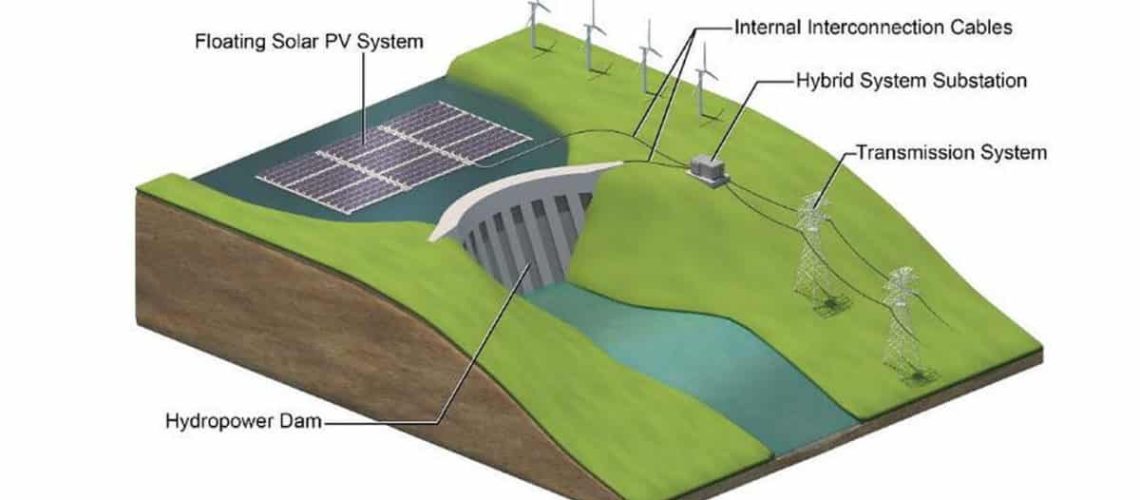Scientists from the National Renewable Energy Laboratory (NREL) have said that the combination of floating solar with hydropower could reduce PV curtailment.
NREL scientists have tried to quantify the operational benefits of combining floating PV generation with hydropower plants.
In “Enabling Floating Solar Photovoltaic (FPV) Deployment,” the researchers considered both the long- and short-term combination of the two energy sources. In their proposed system configuration, the hydropower facility would rely on a grid interconnection capacity that equals its installed capacity. The floating PV array, meanwhile, would be 50% of the nameplate capacity, with its tilt angle set at 11 degrees.
The scientists considered PV curtailment on an hourly, daily, and seasonal basis. They said that the hybridization of the two energy sources could provide benefits from the plant level to the system level.
“Actual hydropower plant flexibility can vary significantly by reservoir size, number of generator units and their characteristics, environmental constraints, and within seasons,” they explained. “For the purpose of our study, we assumed that hydropower was only constrained by available water and a ramp rate.”
They found that the combination of floating PV and hydropower could reduce solar curtailment. “At a system level, the cost optimal operational decision is to maximally utilize low-to-zero marginal cost resources by dispatching solar and conserving hydropower resources for later in the year if the hydropower is flexible enough to do so,” they said.
Floating arrays connected to hydropower facilities could also generate more electricity, thanks to curtailment reduction.
“At the diurnal scale, results suggest that full hybridization could lower generator
operations and maintenance costs and reduce cycling for gas-fired generation by taking advantage of more hydropower flexibility,” they said. “At the seasonal scale, results suggest that hybridizing FPV leads to more optimal use of water resources with hydropower generation reduced in the wet season to conserve water for use during the dry season.”
Looking forward, the NREL researchers said more work is needed to assess system costs.
“This kind of analysis would require more spatially and temporally resolved data, as well as a production cost model that can model at a sub-hourly timescale,” they said.
A similar study was published last year by a research group from the Islamic University of Technology, in Bangladesh. They showed that the two energy sources could be perfectly optimized and that PV could compensate for water shortages during the winter, while hydropower could compensate for poor yields from the floating array during monsoon season.
Scientists have conducted several studies in recent years on the combination of the two technologies. Past NREL research showed that linking solar with hydro in a full hybrid system configuration at every hydroelectric facility in the world could result in the deployment of 7,593 GW of combined generation capacity.



